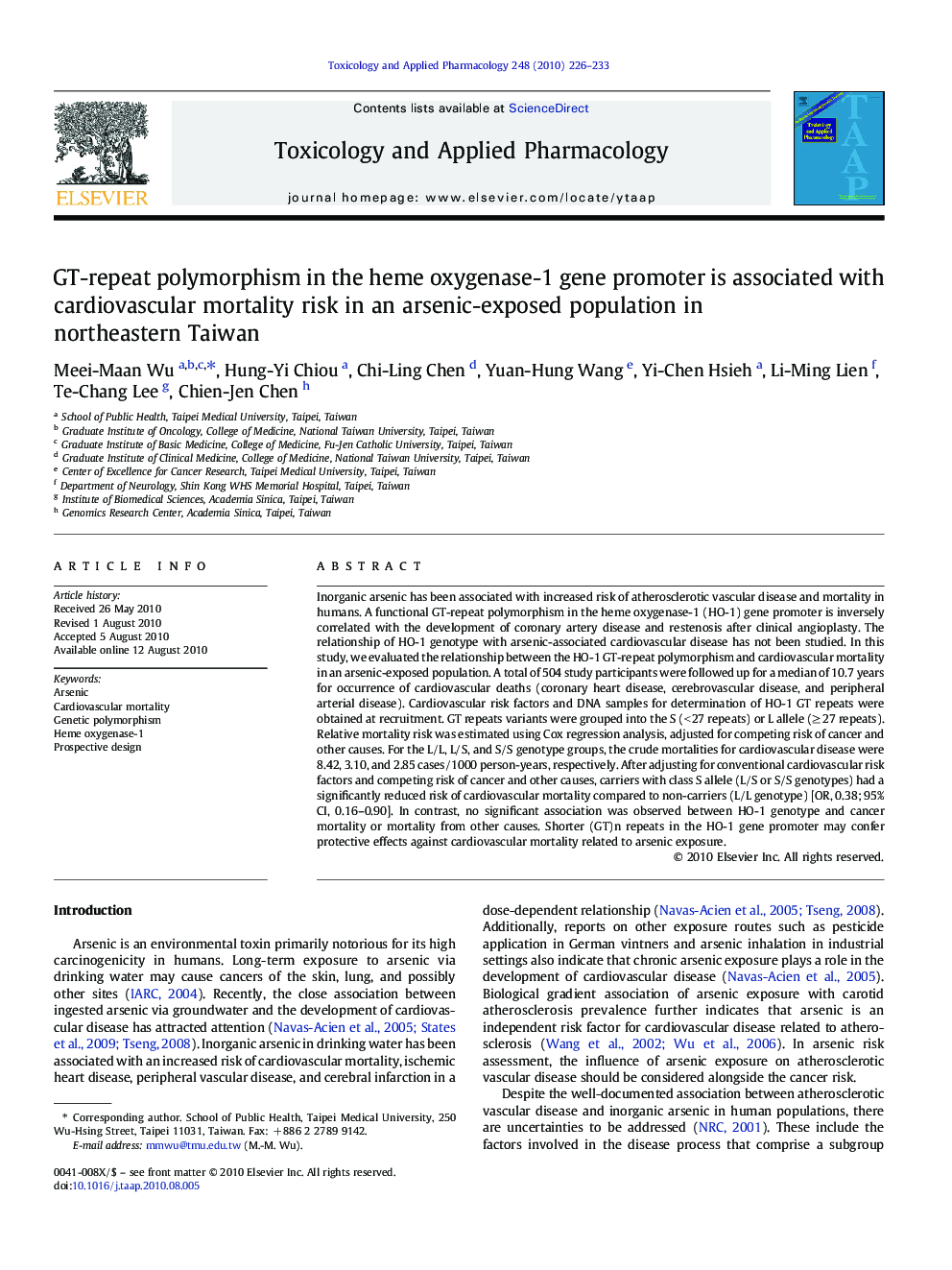| Article ID | Journal | Published Year | Pages | File Type |
|---|---|---|---|---|
| 2570196 | Toxicology and Applied Pharmacology | 2010 | 8 Pages |
Inorganic arsenic has been associated with increased risk of atherosclerotic vascular disease and mortality in humans. A functional GT-repeat polymorphism in the heme oxygenase-1 (HO-1) gene promoter is inversely correlated with the development of coronary artery disease and restenosis after clinical angioplasty. The relationship of HO-1 genotype with arsenic-associated cardiovascular disease has not been studied. In this study, we evaluated the relationship between the HO-1 GT-repeat polymorphism and cardiovascular mortality in an arsenic-exposed population. A total of 504 study participants were followed up for a median of 10.7 years for occurrence of cardiovascular deaths (coronary heart disease, cerebrovascular disease, and peripheral arterial disease). Cardiovascular risk factors and DNA samples for determination of HO-1 GT repeats were obtained at recruitment. GT repeats variants were grouped into the S (< 27 repeats) or L allele (≥ 27 repeats). Relative mortality risk was estimated using Cox regression analysis, adjusted for competing risk of cancer and other causes. For the L/L, L/S, and S/S genotype groups, the crude mortalities for cardiovascular disease were 8.42, 3.10, and 2.85 cases/1000 person-years, respectively. After adjusting for conventional cardiovascular risk factors and competing risk of cancer and other causes, carriers with class S allele (L/S or S/S genotypes) had a significantly reduced risk of cardiovascular mortality compared to non-carriers (L/L genotype) [OR, 0.38; 95% CI, 0.16–0.90]. In contrast, no significant association was observed between HO-1 genotype and cancer mortality or mortality from other causes. Shorter (GT)n repeats in the HO-1 gene promoter may confer protective effects against cardiovascular mortality related to arsenic exposure.
